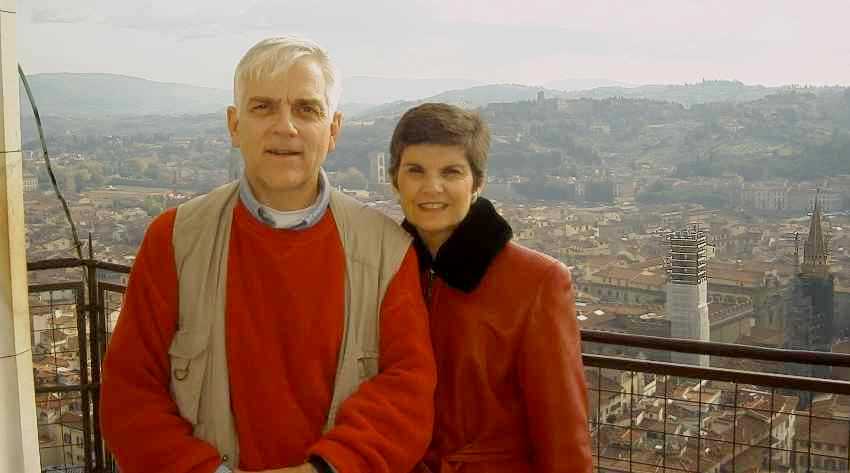
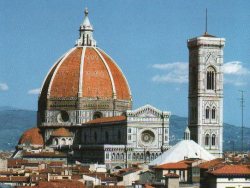
We became intimately familiar with the dome by walking between its two shells (It's like the two top halves of a Russian Easter egg) and out onto its two observation decks (one inside, the other shown at the top of our Tuscany index page (repeated lower on this page as well) with a majestic view of Florence -- even when we are not part of the picture).
The Cathedral's dome is truly an architectural gem, still impressive today but obviously a blockbuster when it was first erected from 1420 through 1434 about a hundred years after the church. (The "small" temple at the top of the dome visible in the picture above was added about thirty years later, making the total dome about twice as high as it is wide). When the architect Fillippo Brunelleschi convinced the city elders to let him build the dome, a huge empty space about half the size of a football field (American) was circumscribed by a high drum. By then it was too late to add buttresses or any other medieval architect tricks to absorb the weight of the roof and he had no interest in living until the late 1800s for steel girders to come into vogue.
Somehow Brunelleschi brought it off in a feat of bravado borrowing from ancient Rome. His two stacked domes were made of dovetailed bricks clinging together and stacked in herringbone patterns clearly visible as you climb between the two domes. These bricks gradually slope inward so that their weight itself holds them up -- no scaffolding needed now or then. As you climb these inner stairs, your body slants with the pull of gravity towards the center of the dome. As the bricks rise, they become thinner, thus reducing the weight at the top (a trick from Rome's Pantheon).
This construction was so obvious to him that he would share its concept with no one until he obtained the commission -- fearful that someone else would steal his idea. He ended up giving us an imitation of a classical building (the forum) built in a gothic manner with its pointed arch, yet on a drum (not his idea, of course) that became the support standard for later renaissance domes. Truly a mixed blessing!
Here's a view looking up from the floor (you've seen it on a previous page, but it was my only tripod shot so I feel compelled to use it twice). This gives the overall view of the Last Judgment painting added many years later. The white octagon is the eye or oculus just like in the Pantheon:
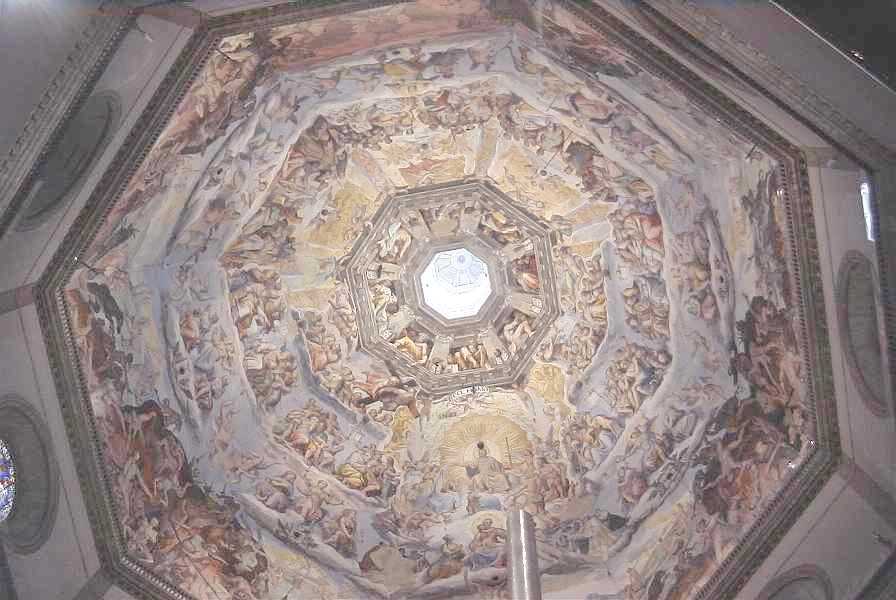
Climbing to the first level, you can see fairly close-up the fresco of the Last Judgement added in 1572-79 by Vasari and Zuccari. (Vasari especially was considered a mediocre but fast painter who crowded his frescoes with too many jumbled figures) Brunelleschi typically kept his interiors a simple white -- but then, he wasn't a painter. Recent suggestions have been to paint over this fresco. This is a little like playing Mozart on original instruments. Nice, but I wouldn't destroy saxophones to do it. We liked what we saw and would vote to keep it:
Here's Christ at the center of the Last Judgement:
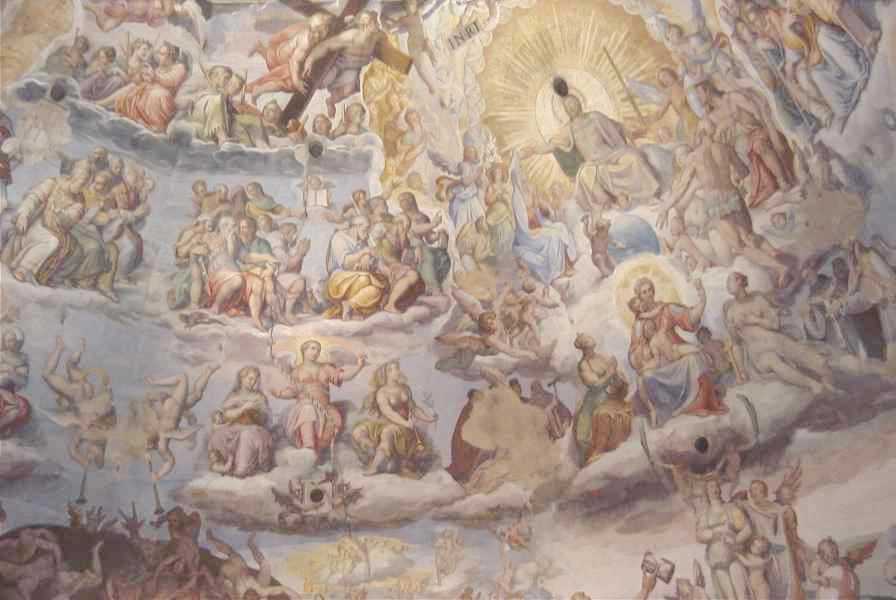
And the adjacent side:
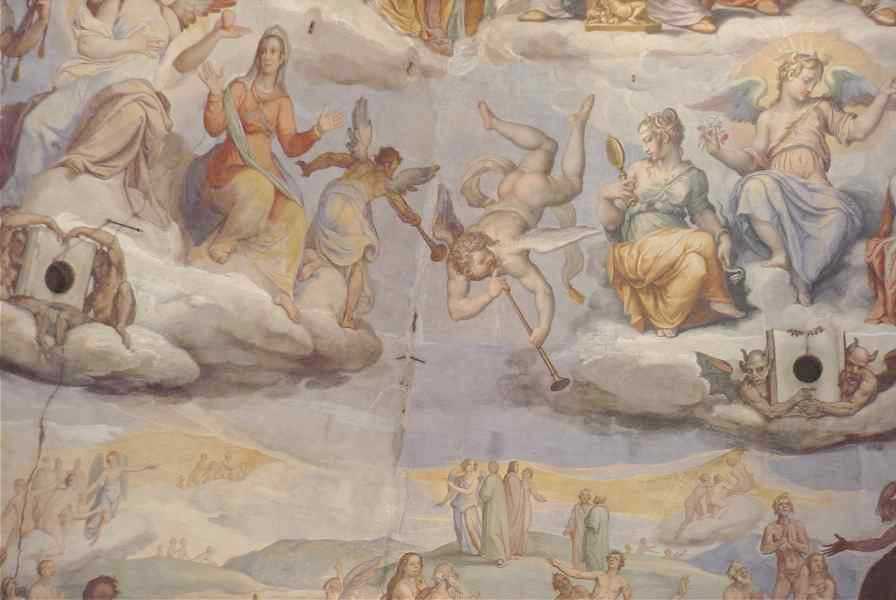
Looking up to the center, one sees the oculus (eye):
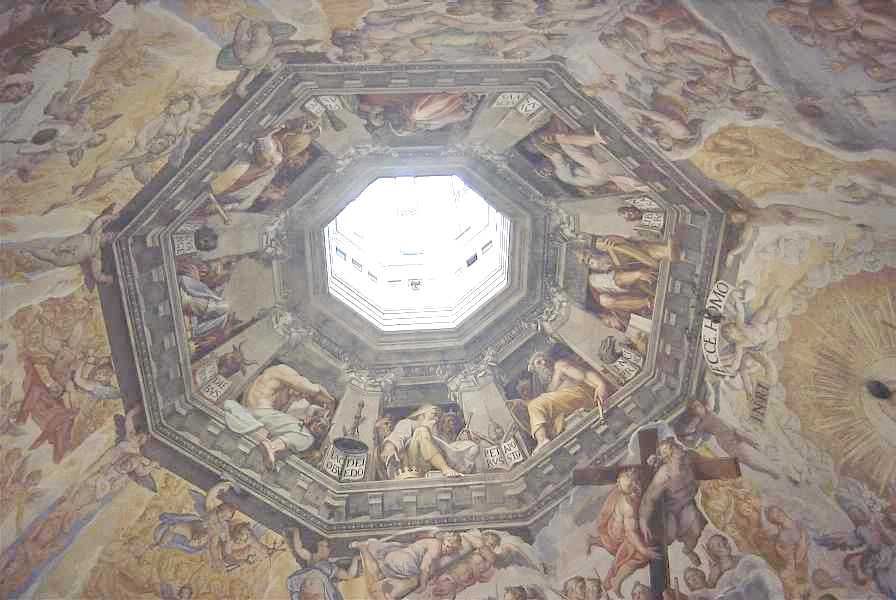
After climbing the 463 (but who's counting?) steps to the top, the gasper is rewarded with spectacular views of the Florence. Here's one with two color coordinated (but little else) wax figures in the foreground of Michelangelo (certainly not David) and Catherine De Medici (one of the two Medici French queens):

At this point, we turned on our Xray vision to get the following shot:
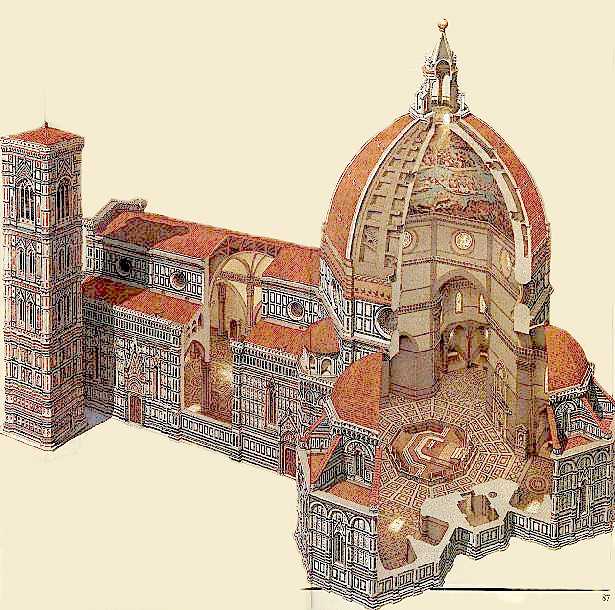
If we had to do it over, we wouldn't have climbed all those stairs but instead leapt up there in a single bound.
Next we ventured slightly westward to the Duomo baptistery where Renaissance sculpture began. Please join us by clicking here.
Where do you want to go today? Here's a few choices:
